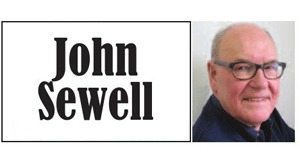John Sewell –
I’ve discovered a new secret garden in Toronto. This doesn’t happen as often as I would like, but when it does, I feel I’ve entered a part of the city I never really knew before.
In this case, it’s a figurative garden, a report called Planning for Prosperity although a more descriptive title would be Planning with Eyes Wide-Shut.
I learned that the second largest employment area in Canada is area around Pearson airport, bounded roughly by Highway 427 to the east, 401/403 to the south and 407 to the west and north. Some 275,000 people work there, a figure larger than the number that work downtown in Montreal, or Vancouver or Calgary.
I knew that a lot of people work in Downtown Toronto (more than 450,000, by far the largest employment area in Canada) but I had no idea there were so many jobs around the airport.
Another large employment area is centred around highways 400 and 407 (135,000 work there) and a fourth employment area (100,000 workers) focuses on highways 404 and 407.
Together the number of jobs in these four areas grew by 8% between 2001 and 2011, even though industrial jobs decreased by 200,000 to half a million.
But the number of knowledge-intensive jobs far more than replaced those lost jobs. And those knowledge-intensive jobs are not just in the Downtown; there’s a good share of them in Meadowvale, south of the airport, and in Markham. (There are also some of those jobs in Waterloo.) These new jobs add real value since they respond to global markets and global needs—they do not just respond to local need (as does, for example, people who work at a corner store.)
No government seems to have a handle on all this growth.
It is happening in a whole bunch of municipal jurisdictions which do not co-ordinate their activities or their policies, and the provincial government certainly has done little to bring clarity to this change and how it is happening.
As the Planning for Prosperity report points out, the province’s Growth Plan for the Greater Golden Horseshoe worried only about residential growth and did not have any analysis of employment issues.
Its proposals for “growth centres” bear no relationship to what has actually happened—indeed most of the growth centres on the Growth Plan are outside of the three large suburban areas described above.
That’s why a title of “planning with eyes wide-shut” is a better description.
The biggest problem with not planning is that society gets besieged by unexpected problems, in this case the gridlock around Toronto with which we are all too familiar. These three employment centres outside of Downtown are all suburban, which means they are at low densities, and the way most employees get to work is by car, hence the gridlock. (Most people Downtown get to work by transit, hence the crowded streetcars and buses and subways.)
What’s needed are policies to immediately intensify the three employment areas and the housing that surrounds them. That intensification will help reduce the needed transit subsidies which means the transit provided can be expanded into high-efficiency surface transport: streetcars, LRTs, busways. But as the report sadly noted, the Big Move plan by the province’s Metrolinx hasn’t responded to the need. The Union Pearson Express train might have sounded like a good idea, but it doesn’t help most of the people who work in the airport area, which is why its ridership is so low.
It’s another example of spending scarce transit dollars without first looking closely at the evidence of what is needed where and why.
I came out of this secret garden light headed. It can be found at www.neptis.org/publications/planning-prosperity.
Are our government structures capable of responding to this success which Toronto has stumbled into? Can we reshape the way we do research, economic and land-use planning, transit planning, and more, to take advantage of how well this urban area is doing? Or will we fall short and not be up to the task of ordering our own future?
Most cities would beg for the opportunities that await the Toronto urban area. Here we are, the place where we live and work. Will the leadership emerge to respond well?
John Sewell is a former Mayor of Toronto. His most recent book, published two months ago, is:
How We Changed Toronto, 1969 – 1980.
 TheBulletin.ca Journal of Downtown Toronto
TheBulletin.ca Journal of Downtown Toronto

